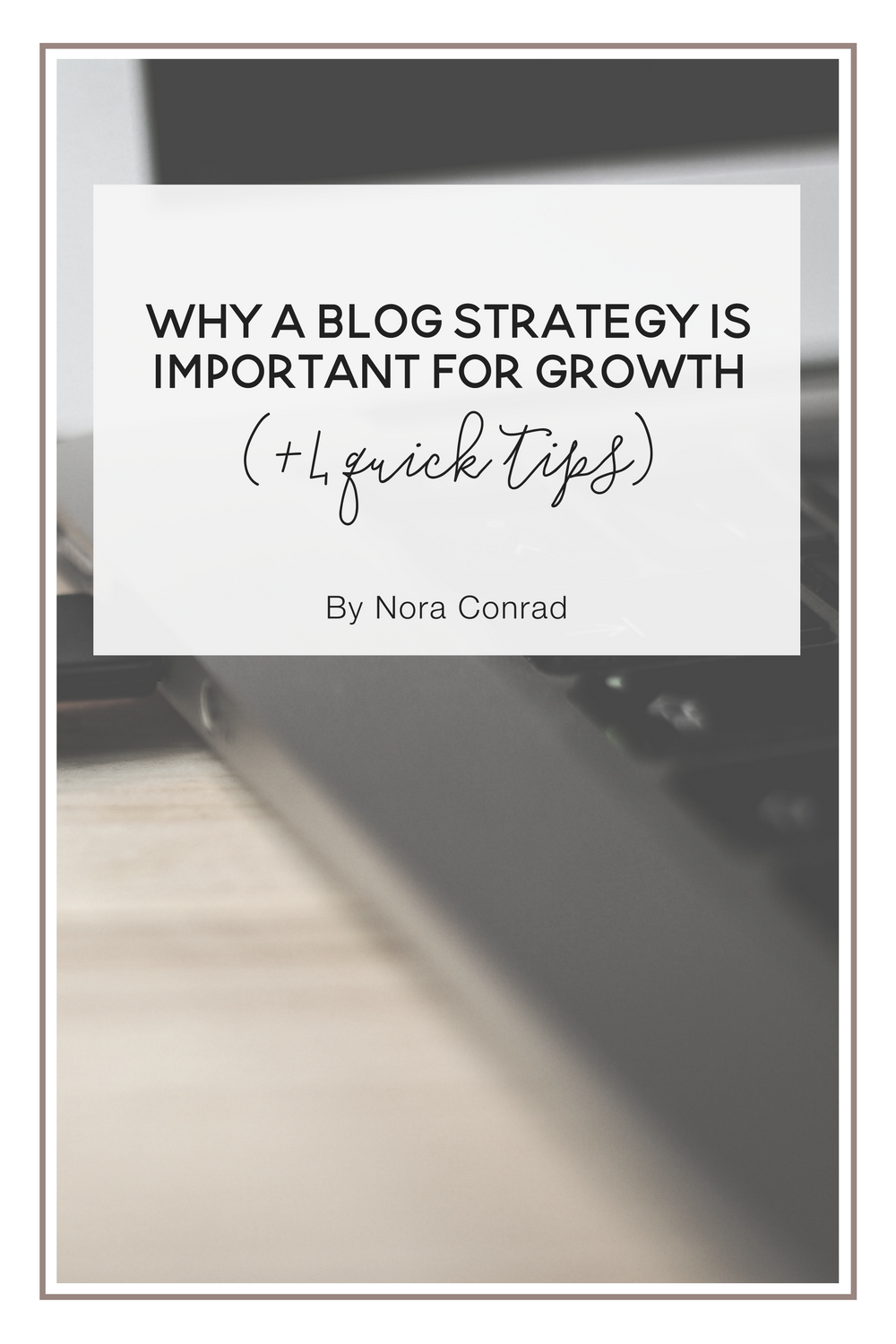Why a blog strategy is important for growth (+4 quick tips)
Consistent growth is one of the biggest challenges experienced by bloggers. Whether you’re blogging to grow a business, create a community, or share your passions with others, growing an active and engaged audience is important.
But where does that growth come from?
Yes, blogging consistently and creating valuable content are important. That’s why people will come to your website in the first place. But what about after that? What if you want them to look around, check out your email list, or follow you on social media?
Your content alone isn’t going to do that.
However, you might be happy to hear that increasing your growth isn’t that hard. All you need to get started is a consistent and focused blog strategy. Let’s start out by talking about why a blog strategy is important for growth.
What growth means for you is going to be different than what it means for someone else. Do you want to grow your:
- Social media followers
- Email list
- Pageviews
- Clients, or
- A mixture of a few?
Just that one fact is why your blog needs to be focused and strategic for the type of growth that you want to see. Creating your own blog strategy will allow you to narrow in on what your growth will look like and create a platform that works for you.
Trying to grow everything at once will leave you with scattered, random, and low-quality results. The same thing goes for failing to focus on anything and hoping that things will just happen.
I can tell you that I was guilty of not focusing on anything specific for a long time. I was looking at what other bloggers were putting on their websites and assuming that I needed to include those things too! I certainly wasn’t thinking of my own blog and business on my previous website when I removed my sidebar, when I added social media links to my footer, when I added an email subscription pop-up, and who knows what else.
The second I focused on my own business and defined what growth meant for me I started seeing results. For me, growth meant growing my email list. When I was able to tell my designer that growing my list was the most important thing all other distractions were removed.
Consider what defining your own focus would do for you? What if instead of focusing on everything at once you focused on growing one part of your blog and business?
Imagine you’d previously been focusing on growing everything at once and decided to focus on growing your email list instead. Now, rather than including calls to action for many different things your blog can become focused in on list growth.
- Your header opt-in can show off your free course.
- The call-to-action in your footer can explain the benefit of joining your list.
- Your sidebar can include an enticing opt-in incentive.
- You can add actionable content upgrades to your top blog posts.
Sounds way more effective than having scattered goals for your website, right?
In case you’re ready to add a solid strategy to your blog, but aren’t sure how let’s go over some quick tips. Follow along with the first few steps in this workbook!
Blog Strategy Quick Tips
1. Know Your Goals
The most important part of your blog strategy are the goals you set. Those goals will define all the decisions you make throughout your blog and will ultimately lead you to decide which type of growth to focus on.
It’s important that you don’t choose a few goals quickly and move on. Instead, take the time to set high-value goals that will really move your blog and business forward.
2. Remove The Distractions
After you have your high-value goals set it’s time to clean up your blog. Having a clean and focused blog will help you as well as your readers. You’ll feel more focused about the direction you’re taking and your readers will have a clear path laid out for them.
To get started, make a list of each place on your website that should be considered for the cleanup. Some places you may want to consider are your
- Sidebar
- Homepage
- About page
- Products/Services page
- Portfolio
- Contact page
- Blog posts
Go through each item in the above locations and ask yourself the following questions:
- Does this relate back to one of my three supporting goals?
- Do I want my readers to be distracted by this?
- Do I want this to shape my readers’ image of me?
If you answer “no” to and of those questions you’ve likely discovered an item that should be removed from your website.
3. Get Off To A Quick + Effective Start
Now it’s time to take action and get your blog strategy off to a quick start. Defining and implementing a full strategy can take weeks or even months. To see results right away, identify the top change you can make to your blog to support each of your goals.
For example, if one of your goals is to grow your email list, you may decide that the most valuable update you can make to your website is to add a new header opt-in section.
Remember, these updates don’t have to be complicated. Small changes can have a large effect.
4. Keep Your Strategy Up To Date
After you’ve defined your goals, done some cleanup, and gotten off to a quick start you’ll need to continue to pay attention to your strategy. It’s something that will evolve along with you and your business.
For example, if you’re at a point that your email list is growing itself due to shares from your existing audience, growing your social media following may become more of a priority. In that case, you shifted your strategy and will therefore need to update your blog to support that.
What Will Your Blog Strategy Focus On?
Have you thought up some goals for your blog strategy just reading this post? Tell us about them in the comments!
Remember to grab your free workbook to get started with your blog strategy!
By Krista Rae
Krista is a blog strategist and WordPress developer who helps female creatives elevate their business, increase conversions, and boost engagement through crafting strategic blogs. She uses personalized, goal-driven strategies to set her clients apart from the competition and highlight their unique offerings. Learn more over on her blog!
Twitter | Pinterest | Bloglovin'


